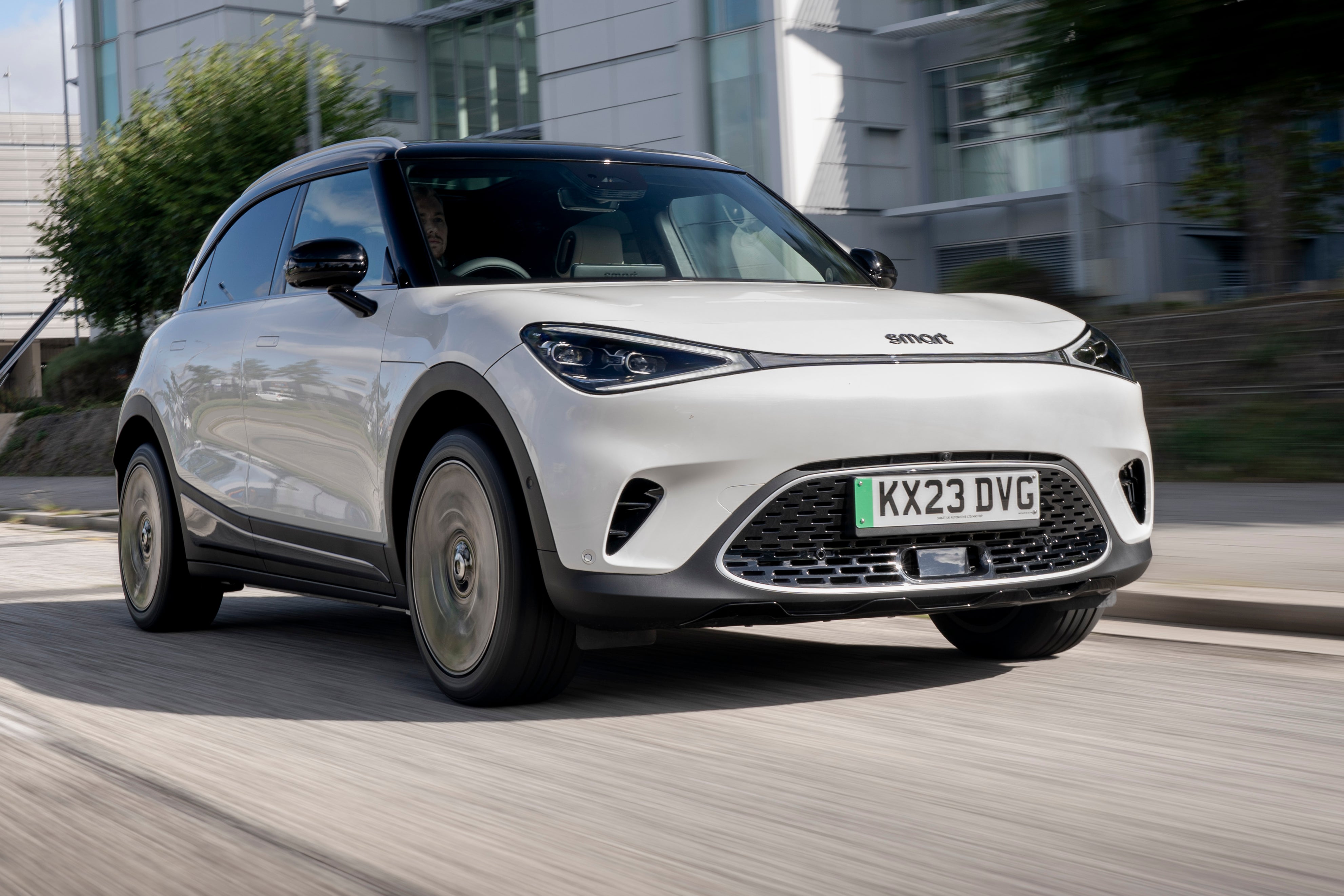Smart #1 Review 2025: Price, specs & boot space
Written by Matthew MacConnell
Quick overview
Pros
- Stacks of interior space
- Comfortable and refined
- Looks great
Cons
- Small boot
- Bumpy at low speeds
- Average handling
Overall verdict on the Smart #1
"Forget what Smart used to stand for with its squished two-seater cars. The new Smart #1 offers as much interior space as a Mercedes-Benz E Class, it’s packed with tech, has a decent range, and is good looking."
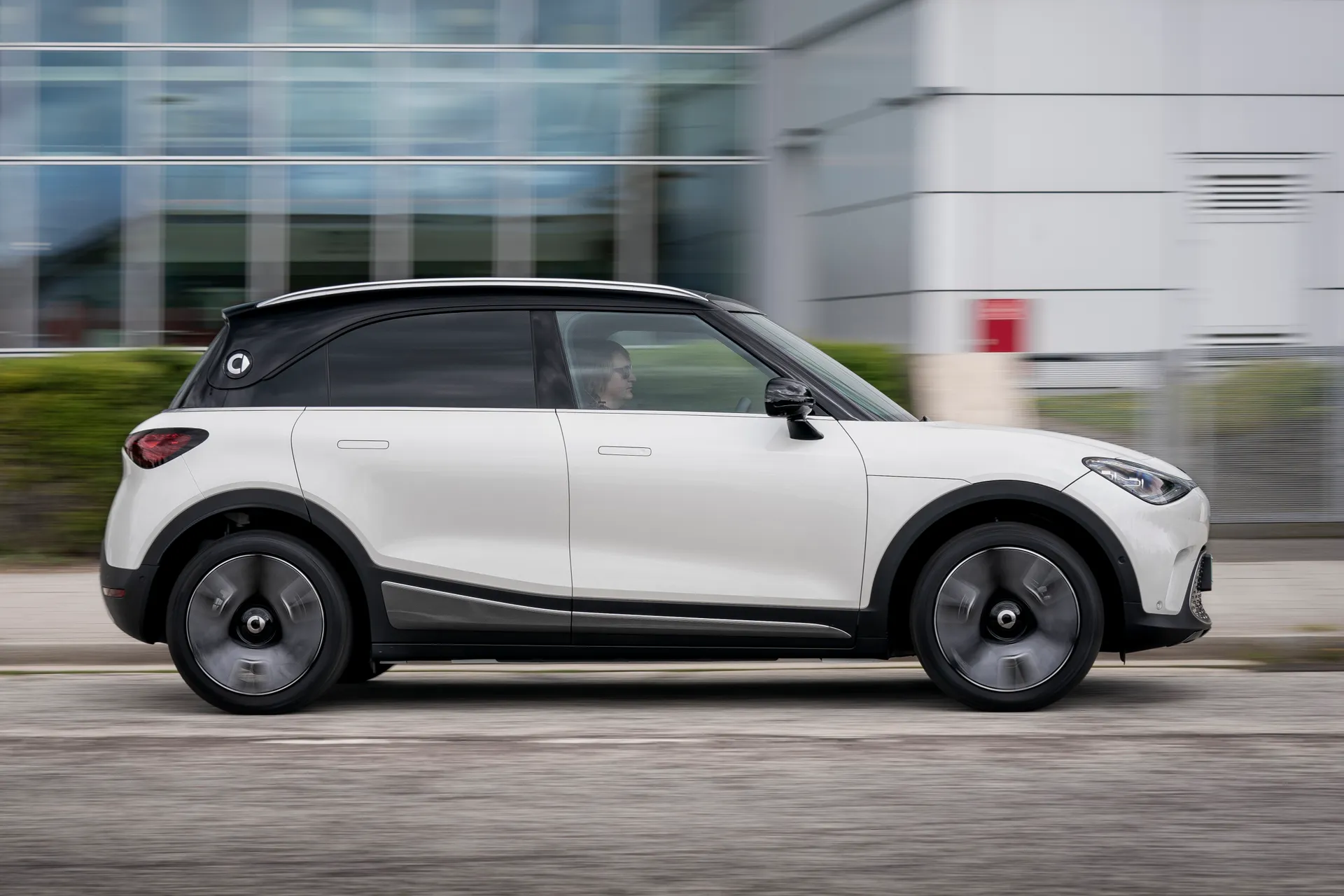
The brand usually known for releasing tiny city cars shocked the motoring world when it teased the Smart #1 in 2021. Its size and looks were more Mercedes-Benz than Smart, but you could still see its influence through the #1’s various quirky exterior design elements.
Released in 2022, the Smart #1 (yeah, that's right - the Hashtag 1) is the brand's first proper electric SUV with a range of up to 273 miles and uses the same underpinnings as the Volvo EX30.
Smart’s pushed the #1’s bulbous bodywork to the edges and flattened the rear to make it as roomy as possible inside. This allows drivers to sprawl out and enjoy its plush cabin without interrupting too much rear occupant space. Likewise, it’s packed with modern safety gizmos, making it passenger and pedestrian-friendly, although these can be overzealous at times.
There are various trim levels to choose from and all offer a variety of different options, ranges, and charging speeds. We also like that Smart has included a hot version that’ll blow the doors off an ID.4 GTX and keep up with a Ford Mustang Mach-E GT in the traffic light Grand Prix, if that’s your thing.
It comes with stacks of tech as standard; most of the things included could’ve easily been made optional extras. If you have a large family, you’re better off looking elsewhere. The boot is just too small and unless you fold the rear seats flat, you’ll struggle to squeeze in a pram or more than two suitcases.
Also, if you’re in the market for something that provides more feedback through the corners, you might want to look at the MG4 or Peugeot e-308. Unfortunately, the #1 doesn’t offer lots of cornering fun, and that includes the fast Brabus variant.
There aren’t many physical buttons and everything is controlled via a central touchscreen, which will take time to get used to because of its graphical layout.
It will be of interest if you are looking for something that sticks out when parked beside a Kia Niro EV, offers more luxury than a Cupra Born, and travels further than a Peugeot e-2008.
Is the Smart #1 right for you?
If you're after an electric SUV with quirky design cues, lots of interior space and a fairly good range, then the #1 should be at the top of your wish list. It remains one of the most comfortable cars to drive in its class and we like that you can opt for a fast Brabus version, if fast acceleration is more your bag.
The Smart #1 is not much of a family hauler, simply because its tiny boot would struggle to more than two suitcases. It also feels weighty and it doesn’t feel that fun on a twisty road; some of its rivals do have the upper hand here.
What's the best Smart #1 model/engine to choose?
What Smart #1 you choose depends on what your lifestyle involves. Luckily, Smart has aimed the #1 at a large audience, which is reflected in its trim selection. There are five trim levels and four are offered with the same 268PS 343Nm electric motor and every car apart from the entry-level Pro gets a 66kWh (64kWh usable) battery.
Selecting the Smart #1 Brabus takes things up a notch as this is equipped with a 434PS 584Nm twin motor. As with most Brabus products, the Smart #1 gets an injection of sporty serum, which can be spotted through the extra bodywork vents and gills. It also puts it deep into supercar baiting territory.
If you don’t plan on covering massive mileage or if you’re unsure if Smart life is for you, then the entry-level car should suffice. However, we feel the Smart #1 Pro+ car offers a good balance of range, onboard tech, performance and cost.
What other cars are similar to the Smart #1?
It’s easy to pick the Smart #1 out of an EV crowd, but the same goes for much of its opposition. The Smart #1 is rivalled by the Cupra Born, Kia Niro EV, Peugeot e-2008, MG4, BYD Atto 3, Jeep Avenger, and Hyundai Kona Electric. Now, we know that’s quite a large list but the Smart #1 does a fine job at holding its own.
In its entry-level Pro spec, the #1 is the second cheapest car on the list with the MG4 being first, but the Smart #1 Pro also has the lowest range.
Dig deeper into your pockets, spec the mid-range Pro+ and you’ll get more range, but some of the #1’s rivals will still offer more at the same price point. Still, you may need to spend extra on options that the #1 already has as standard.
Comfort and design: Smart #1 interior
"Smart has gone for a fun and dynamic interior to match its exterior physique. Gone are the days of bland interiors, the #1’s interior is filled with nice textures, colours, and shapes without overloading your eyes, and giving you a headache."
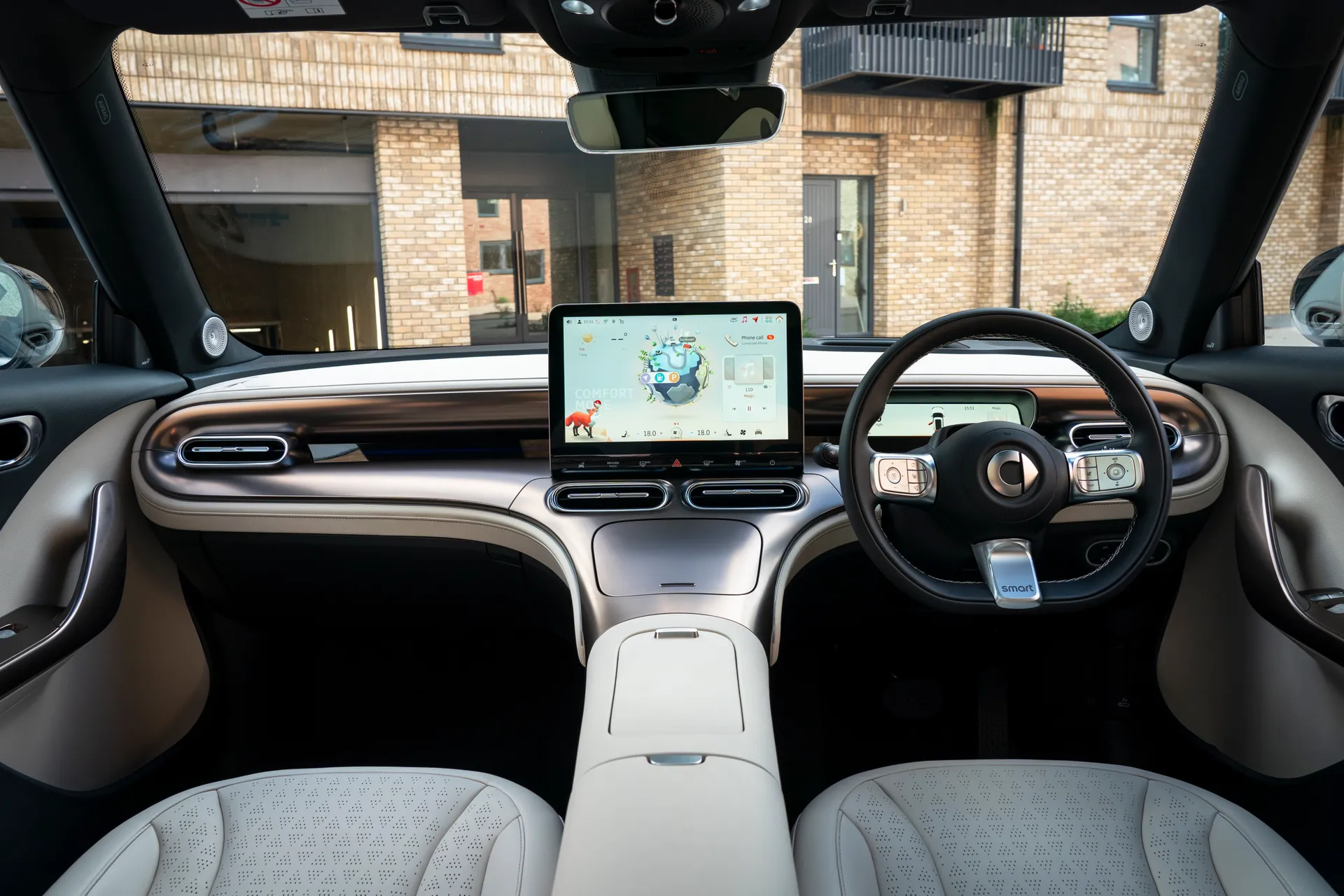
Openi the doors of reveals a futuristic interior that doesn’t fall far from the Smart #1’s original concept car. There are lots of swooping lines, curved corners, and ambient lighting. It’s all very artsy and contemporary.
There aren’t masses of choice when it comes to the Smart #1’s interior colour. The Pro and Pro+ only offer a very Mercedes-Benz E-Class-y colour combo of black and silver.
Premium buyers can choose between ‘Dark Matter’, which is black and white, or ‘Touch’. The latter lifts the cabin significantly, mixing white, black, and rose gold elements. Of course, this is down to personal preference. Its Brabus trim gives more of a stealth look with its black, silver, and red highlights. It also has red stitching with matching seatbelts.
The Smart #1 sits quite low for an SUV; there’s no road-commanding view, nor can it take on mountain terrain as its category might suggest. Large windows flood the cabin with light and give plenty of visibility. Likewise, the seats (including the rears) and steering wheel have plenty of adjustment.
Quality and finish
The interior quality and finish are impressive in the Smart #1. Smart hasn’t cut corners by littering the cabin with scratchy, easily marked plastics. They still exist but they’re tucked out of sight.
It has filled the Smart #1’s interior with soft-touch materials and the visible plastics feel very upmarket, just like you’d find on a high-end Mercedes-Benz.
Running your hand along the dashboard showcases its smooth leather and the same goes for the seats. The entry-level model gets artificial leather, while the Premium gets the real stuff. Of course, these aren’t much use in the Brabus as you’ll slide around when tackling corners with gusto, so it gets grippier upholstery to help keep you in position.
Infotainment: Touchscreen, USB, nav and stereo in the Smart #1
Regardless of which trim you choose, the Smart #1 gets a crisp and bright 9.2-inch digital instrument panel and a similar 12.8-inch touchscreen infotainment in the dashboard centre.
Smart has not only made it responsive to touch inputs but it’s also heaps of fun. At first, it can all seem a bit much. On the left, the home screen shows the car’s range and radio station. There are also a few quick menu buttons at the top left while the bottom row allows access to the climate controls. A digital earth, which is the sat nav control, is in the middle. To the right is the weather and the current driving mode, and there’s a fox avatar which follows you from menu to menu.
It’s all very friendly but like many modern EVs, most settings, including the door mirror adjustment, are annoyingly buried deep within sub-menus on the touchscreen. It does come equipped with Android Auto and AppleCarPlay, and there’s a pet mode so you can safely leave an animal in the car on hotter days.
We found using the voice control to be a tricky affair as it almost baked us when attempting to adjust the climate control. Lifting the small dashboard cover in the centre console reveals two USB-C charging ports, a 12V socket, and a wireless phone charger.
Space and practicality: Smart #1 boot space
It might have a pet mode but unless you have a Bichon Frise, your beloved dog might struggle to get comfortable. Opening the electronic boot lid reveals a rather disappointing 411 litres of boot space.
That’s still better than what the Cupra Born offers at 385 litres but it falls short against most of its other rivals. Putting the rear seats in the knee-friendly position via its sliding mechanism decreases this to just 273 litres. Of course, you can fold the rear seats flat by pulling the latch on each seat, which brings it up to 1,000 litres.
Being a rear-wheel drive car, there are lots of powertrain gubbins underneath and this means that the boot floor sits quite high. There’s also a removable parcel shelf and a nifty area underneath the false floor where it can be stored whenever it’s not in use. Popping the bonnet reveals a ‘frunk’, but this is miniscule at just 15 litres and is more suited to carrying a loaf of bread rather than charging cables.
Thankfully, Smart has implemented lots of cubby holes in the Smart #1’s interior. Flip up the armrest and you’ll see a good-sized area for stowing valuables. Forward of the armrest is two cup holders and a phone holder.
Handling and ride quality: What is the Smart #1 like to drive?
"It makes a great motorway cruiser and will impress those who often travel long distances. However, it struggles to retain cabin comfort at lower speeds and if you’re expecting it to wow you in the corners, you’ll be deeply disappointed."
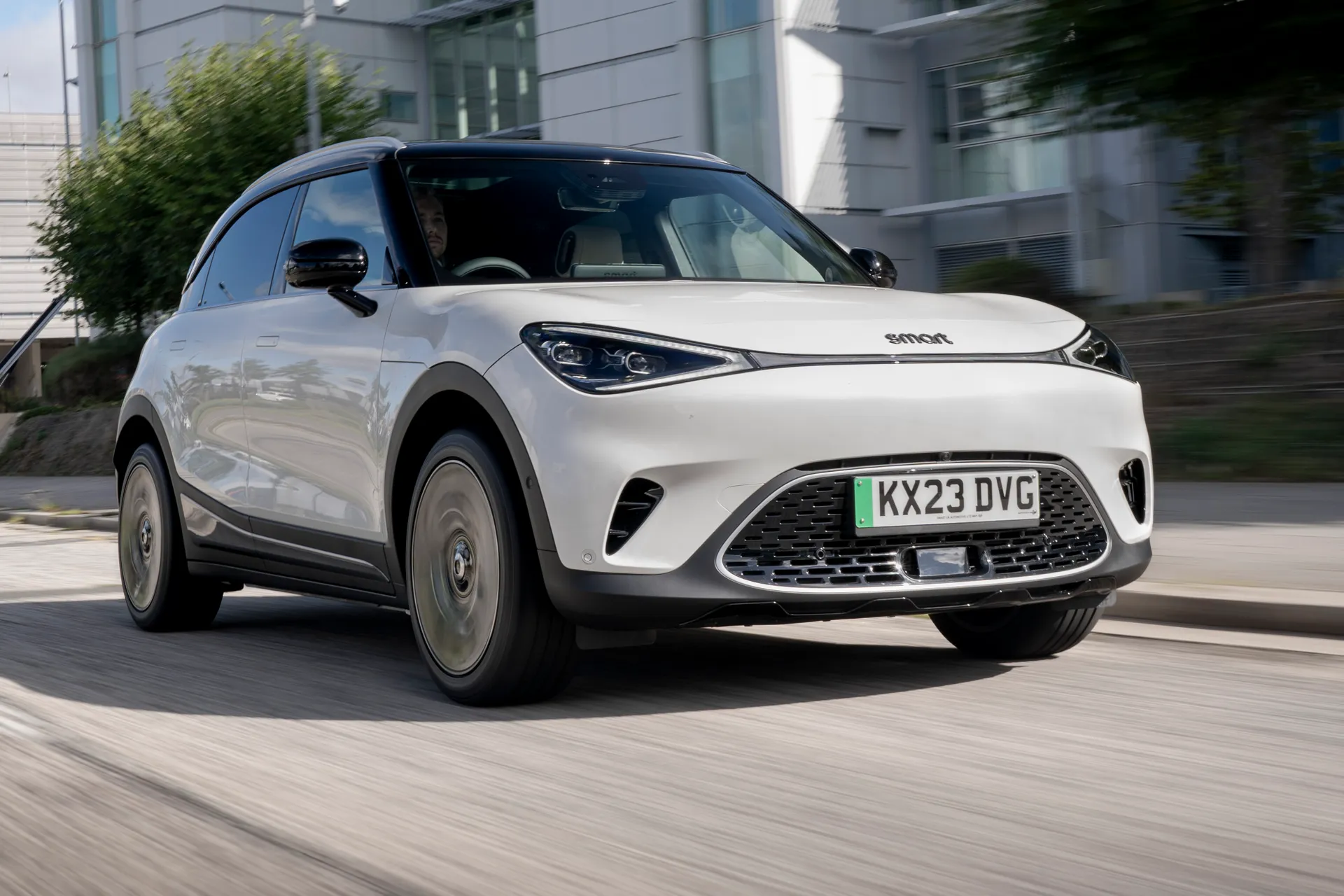
There’s nothing truly wrong with the way the Smart #1 takes corners, but it just doesn’t deliver much engagement. It does have lots of grip and it doesn’t roll too much, allowing you to make some progress, but that’s about it. Those who opt for the Smart #1 Brabus won’t get any suspension or mechanical upgrades either. Instead, you just get more power which can make exiting a corner that bit more fun.
Around town, it feels jiggly, as do a lot of electric cars, but it still tries to deliver a comfortable experience. It does a fine job of soaking up drain covers and potholes. Likewise, visibility is excellent thanks to the large windows and smaller rear quarter windows. Navigating smaller streets is easy because of its tight turning circle; it’s not quite on par with the Renault Megane E-Tech, but it’s good enough and is assisted by a 360-degree camera.
There are three driving modes: comfort, eco, and sport. The latter increases the motor responsiveness but doesn’t alter the suspension firmness. You’ll likely find yourself cruising around in comfort as this offers a good blend. Eco calms everything down to maximise range, although the #1 still feels responsive enough in this setting.
What motors and batteries are available in the Smart #1?
Being an EV, there are no additional gearbox choices. There are two motor options available with the Smart #1 depending on which trim is selected. The regular single-motor trims give enough oomph for everyday driving, with a 0-62 mph time of 6.7 seconds and a top speed of 112 mph. This allows for swift overtaking and motorway joining thanks to the dollop of torque that’s readily available.
Spec the twin motor Smart #1 Brabus, and the 0-62mph time drops to just 3.7 seconds although the top speed remains capped at 112 mph. The #1 sits on Geely’s new SEA platform (Sustainable Experience Architecture), which also underpins the Volvo EX30.
Maximum electric range in the Smart #1
The base Pro guise is claimed to travel up to 193 miles on a single charge. The Pro+ covers 260 miles and the Premium will manage 273 miles. The hot Brabus version is claimed to cover a lower 248 miles.
Refinement and noise levels
Smart’s done a grand job hushing the Smart #1’s motors and silencing the overall ride. There’s not much whine, even when hammering on, and there’s very little tyre noise at lower speeds.
If we’re being picky, wind and tyre noise do increase slightly above 70 mph but overall, the cabin’s well insulated and aids the Smart #1’s relaxing aura.
Safety equipment: How safe is the Smart #1?
Safety has never been an issue for Smart cars, despite the use of petite frames, with most models getting a four-star Euro NCAP rating. The Smart #1 gets a five-star Euro NCAP rating, which includes a 96 percent adult occupancy rating and an 89 percent child safety rating.
The driver assist rating was quite high at 88 percent, too. This is because the #1 comes as standard with a host of safety tech such as blind spot warning, adaptive cruise control, lane-centring (which can be quite intrusive), automatic emergency braking, and front and rear cross-traffic alert.
Step up to the Brabus or Premium models and you’ll get an automatic parking system.
Smart #1 charging times: How much does it cost to charge?
"There are quicker charging cars on the market, but the #1 is still one of the few to offer 22kW AC charging as an option. Regardless, the it kicks off with 130kW DC and 7.4kW AC charging."
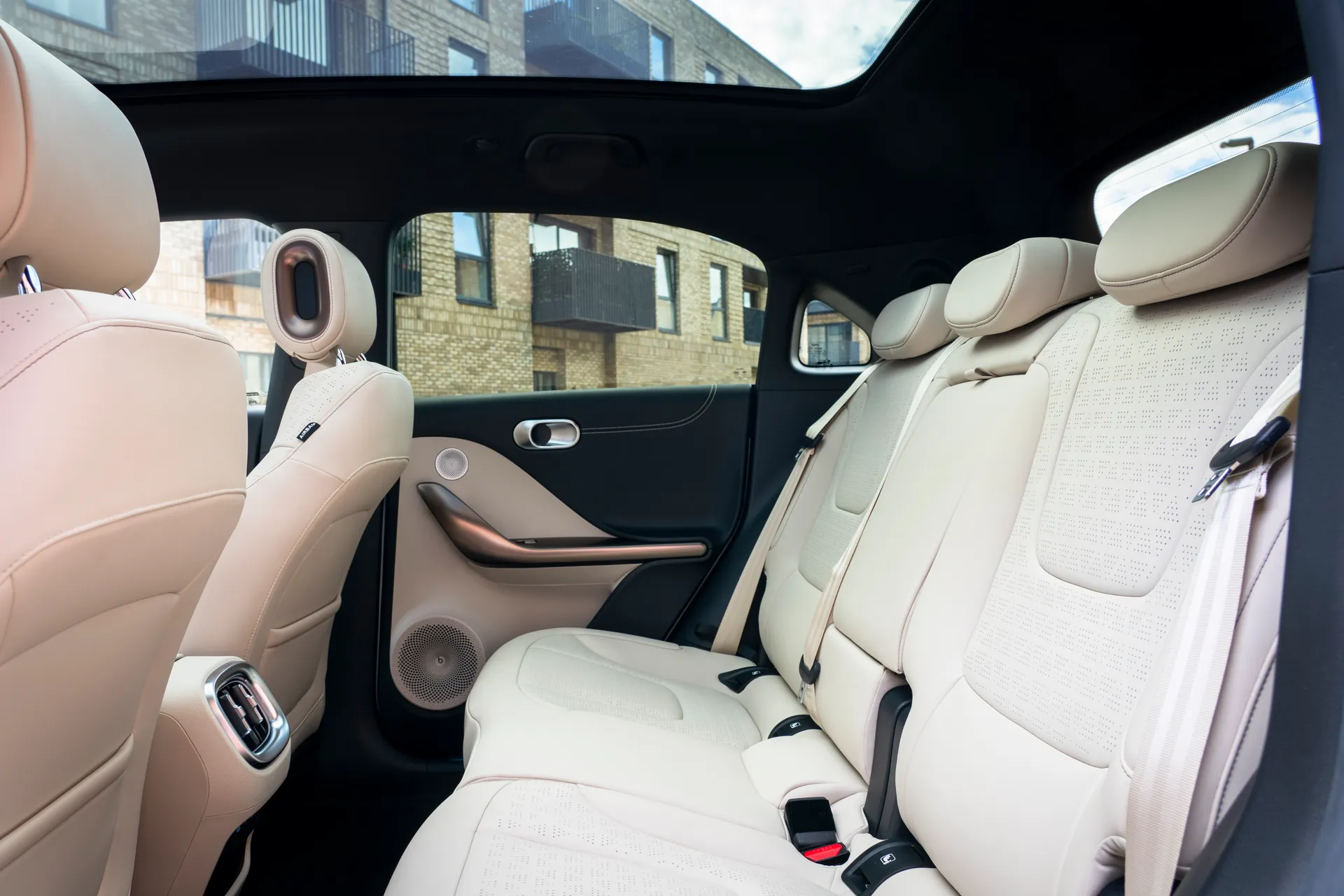
Opting for the entry-level Smart #1 Pro means you’ll get a smaller 49kWh battery and 7.4kW AC charging. This means charging the #1 from 10-80% takes 5.5 hours. Luckily, it still gets 130kW DC charging, allowing it to do the same fill in just 30 minutes. Smart also claims it’s good for 3.4mi/kWh and it’ll give 193 miles combined when fully juiced.
Step up to the Smart #1 Pro+, and the battery increase brings a combined total of 260 miles. There’s also an increase in the DC charging speed to 150kW to accommodate the larger battery, but charging time from 10-80 percent remains at 30 minutes. Like the Pro, it only has 7.4kW AC charging which means it takes a lengthy 7.5 hours to charge.
The Premium and Brabus models have 150kW DC charging but also have 22 AC charging capability. This means it’ll charge from 10-80 percent in just three hours when connected to a home charger. Smart also claims the Premium will return 3.7mi/kWh while the Brabus manages 3.4mi/kWh. It’s not the most efficient electric car on sale, nor the best amidst its competitors.
Smart #1 reliability and warranty
The Smart #1 is still relatively new and it hasn’t secured its place on the Honest John satisfaction index as a result. And there aren’t any previous newish Smart models to compare it to. However, it is a joint venture with Mercedes-Benz and Geely.
Mercedes-Benz did score a satisfaction index rating of just 80.98 percent in the 2023 index, putting it at the top of the worst 20 cars list. It wouldn’t be fair to put Smart in the same field, however, as other Geely products score a bit better.
Smart #1 insurance groups and costs
Like many cars, insurance cost depends on which trim level you choose. The entry-level Pro comes in at insurance group 30, putting it on par with the Kia Niro EV and Volkswagen ID.3.
The Premium is group 32, placing it beside the Hyundai Kona Electric and Renault Scenic E-Tech. The go-fast Brabus is the highest in group 38. This puts it beside the BMW iX1 and iX2, the Cupra Tavascan, and the Skoda Enyaq.
VED car tax: What is the annual road tax on a Smart #1?
Being an electric car, there’s no road tax cost for the Smart #1. This is to change in 2025 and EVs that have a list price of over £40,000 will be subject to an expensive car tax supplement, which can be up to £600 per year. Luckily, most #1’s fall under £40,000, but those purchasing a new Brabus may get stung.
Owners of new zero-emission cars registered on or after 1 April 2025 will pay the lowest first-year rate of VED, which is currently £10 per year. From year two of registration onwards, this will increase to £190.
Smart #1 price
"Prices start at £31,950 for the Pro, £35,950 for the Pro+, £38,950 for the Premium, and £43,450 for the Brabus."
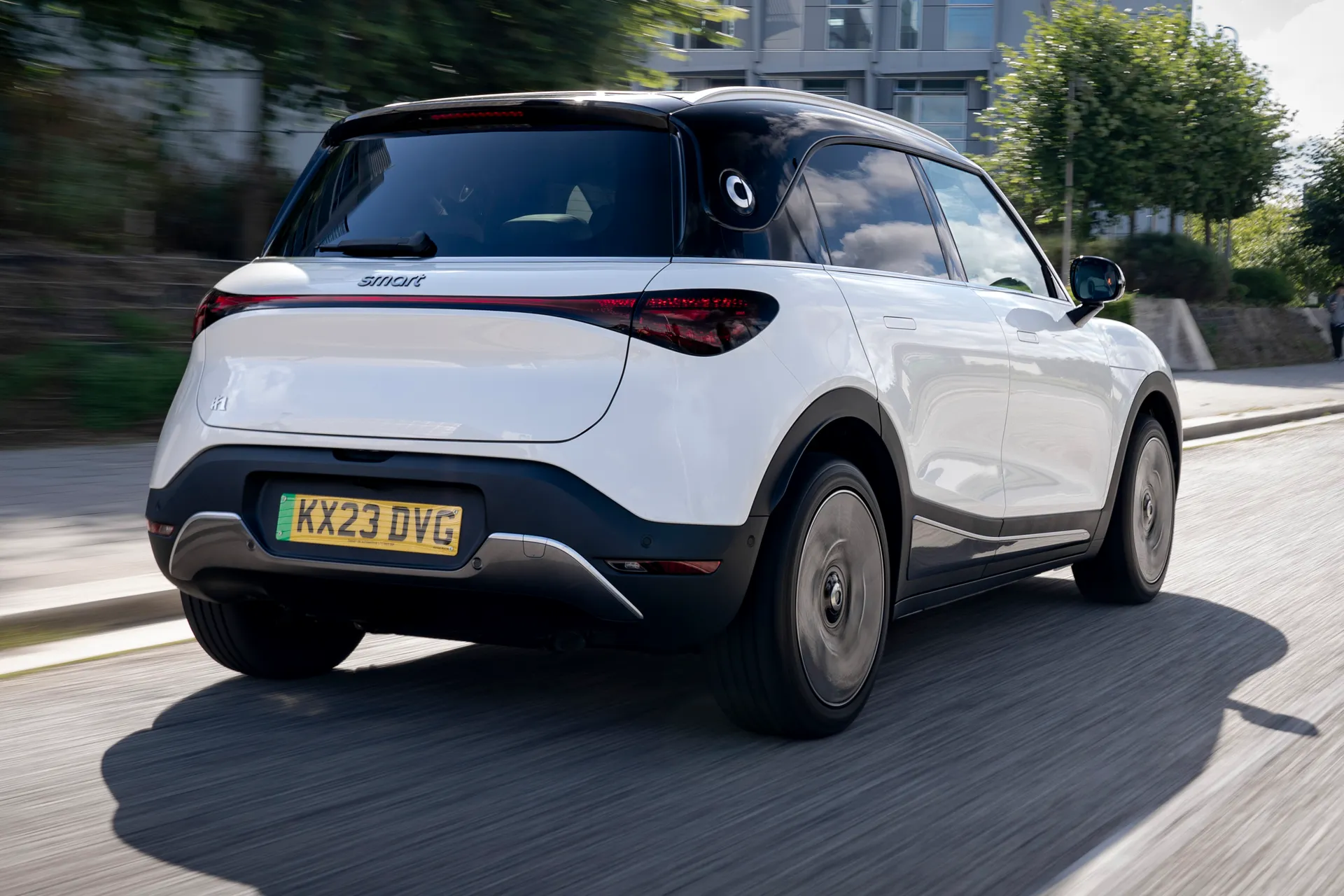
Used prices aren’t miles off initial purchase values, but you can pick up a decent low-mile car for mid £20,000. Of course, you can still pay up to nearly £40,000 for a used example, and there are a lot of good deals if you know where to look.
Looking at the classifieds reveals plenty of choices. A 2023 Brabus Smart #1 with just 700 miles can be had for just £31,000 — that’s a £12,450 difference compared to a new car. 2024 Pro+ cars start at £24,420, although these have circa 11,500 miles, and Premium models land at £26,490, which gets you a 2023 car with 9,500 miles.
Trim levels and standard equipment
The Smart #1 Pro and Pro+ have a decent standard tech list. This includes ACC, LED lights, heated seats, a panoramic sunroof, keyless entry, high beam assist, powered boot lid, rain-sensing wipers, driver seat memory, and ambient lighting. There are no optional extras, just colour choices and these are split between solid and two-tone.
Spec the Smart #1 Premium, and you’ll get a Beats sound system with 13 speakers, a HUD, and a heat pump. It also comes with other cosmetic add-ons such as door logo projectors and illuminated door tread plates. The Pro and Pro+ offer everything needed for daily driving, and we feel there’s no real reason to opt for the Premium unless you want the heat pump and value audio clarity.
The same goes for the Smart #1 Brabus trim. It looks great, and its more powerful motor might be enough to persuade those eyeing up more expensive machinery, but the standard cars offer enough performance to tackle the daily commute.
Ask the heycar experts: common questions
What is the Smart #1?
How much does the Smart #1 cost?
Does Mercedes-Benz own Smart?
Get our latest advice, news and offers
Keep me updated by email with the latest advice, news and offers from heycar.
By submitting you agree to our privacy policy
